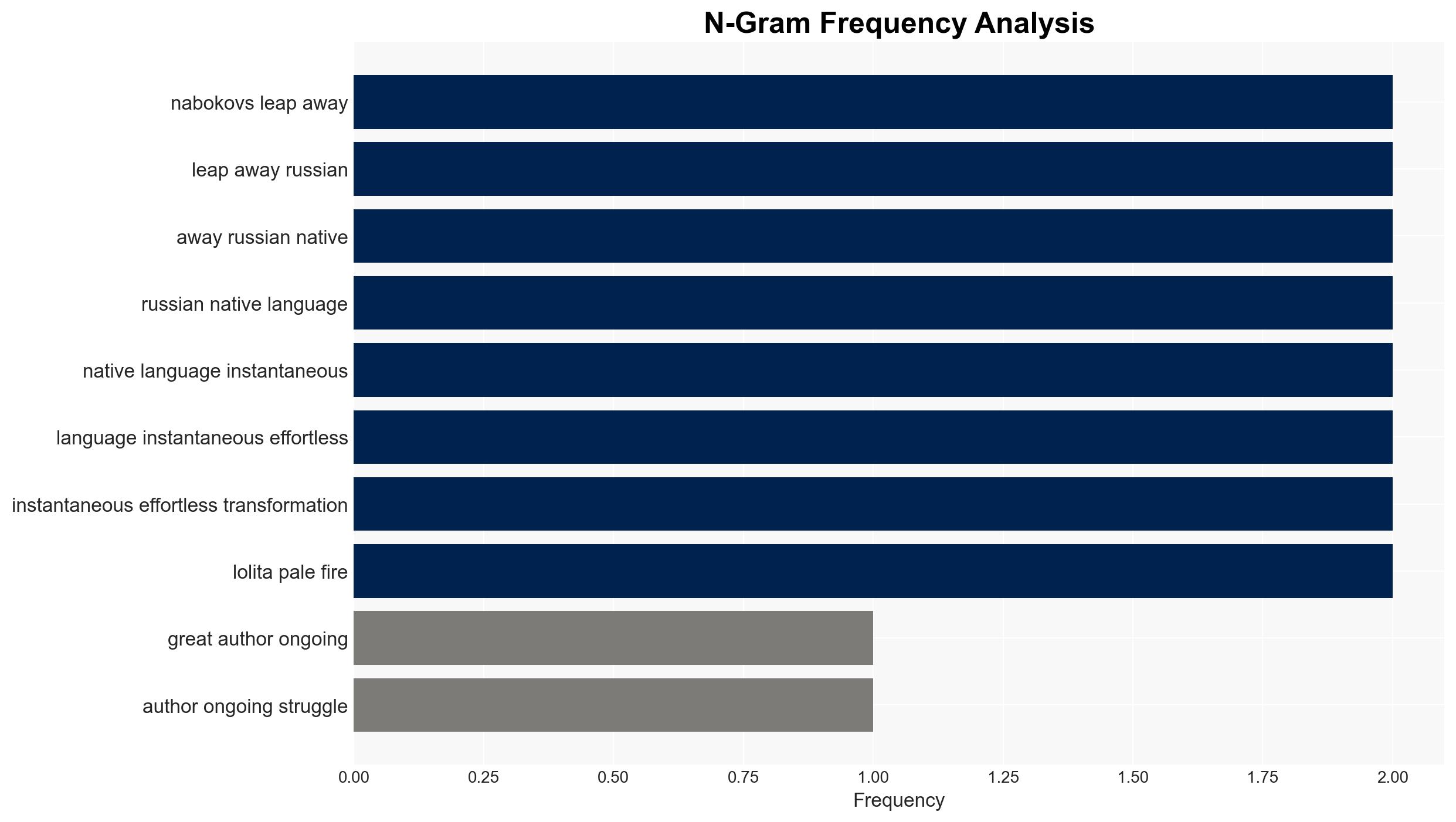A Great Authors Ongoing Struggle – The Atlantic
Published on: 2025-11-14
AI-powered OSINT brief from verified open sources. Automated NLP signal extraction with human verification. See our Methodology and Why WorldWideWatchers.
Intelligence Report: A Great Authors Ongoing Struggle – The Atlantic
1. BLUF (Bottom Line Up Front)
With a moderate confidence level, it is assessed that the ongoing struggle of authors like Vladimir Nabokov with language transition highlights both the challenges and opportunities of linguistic adaptation in a globalized world. The most supported hypothesis is that the cultural and linguistic nuances lost in translation can lead to a diminished appreciation of literary works, which could be exacerbated by the rise of AI translation technologies. Recommended action includes promoting language learning and cultural exchange programs to preserve linguistic diversity and depth.
2. Competing Hypotheses
Hypothesis 1: The struggle of authors transitioning between languages, as exemplified by Nabokov, underscores the potential loss of cultural and linguistic richness in literature, which could be further diluted by AI translation technologies.
Hypothesis 2: The transition between languages by authors like Nabokov represents an opportunity for cross-cultural enrichment and the evolution of literary expression, with AI translation serving as a tool to facilitate broader access and understanding.
Hypothesis 1 is more likely given the evidence of Nabokov’s struggle and the nuanced appreciation required for literary works, which AI may not yet fully replicate.
3. Key Assumptions and Red Flags
Assumptions: It is assumed that linguistic nuances are critical to the appreciation of literary works and that AI translation cannot yet fully replicate these subtleties. Additionally, it is assumed that the cultural context is integral to understanding literature.
Red Flags: The potential over-reliance on AI translation could lead to a homogenization of language and culture. There is also a risk of underestimating AI’s future capabilities in handling linguistic subtleties.
4. Implications and Strategic Risks
The primary risk is the potential erosion of linguistic diversity and cultural richness in literature, leading to a homogenized global culture. This could result in a loss of cultural identity and heritage. Additionally, there is a risk that AI translation could diminish the perceived value of learning new languages, impacting cultural exchange and understanding.
5. Recommendations and Outlook
- Promote language learning and cultural exchange programs to preserve linguistic diversity.
- Encourage the development of AI translation technologies that prioritize cultural and linguistic nuances.
- Best-case scenario: AI translation enhances cross-cultural understanding without compromising linguistic richness.
- Worst-case scenario: Over-reliance on AI translation leads to cultural homogenization and loss of linguistic diversity.
- Most-likely scenario: A balanced approach where AI translation coexists with traditional language learning and cultural exchange.
6. Key Individuals and Entities
Vladimir Nabokov, Ross Benjamin (translator), Franz Kafka (author referenced), Ferdinand (character in children’s story).
7. Thematic Tags
National Security Threats, Cultural Preservation, AI and Technology, Linguistic Diversity
Structured Analytic Techniques Applied
- Cognitive Bias Stress Test: Expose and correct potential biases in assessments through red-teaming and structured challenge.
- Bayesian Scenario Modeling: Use probabilistic forecasting for conflict trajectories or escalation likelihood.
- Network Influence Mapping: Map relationships between state and non-state actors for impact estimation.
Explore more:
National Security Threats Briefs ·
Daily Summary ·
Support us
·





